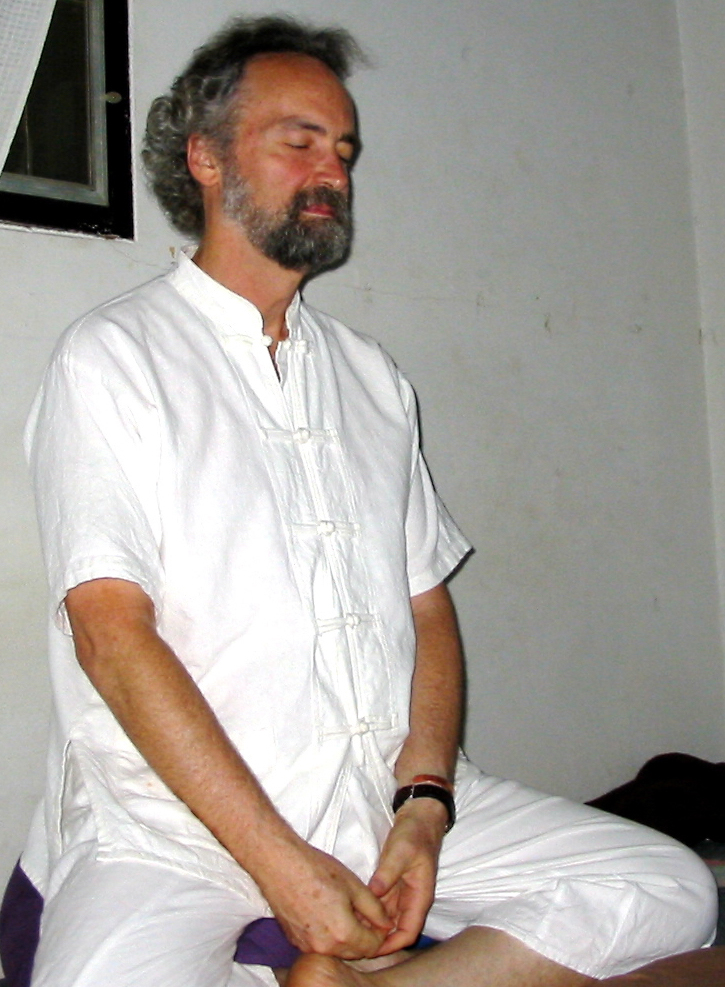
June 21, 2018

I’ve been sitting down to meditate daily for over 40 years. The techniques I use have evolved. But I don’t have to think about them much. I just sit down, close my eyes, and awareness knows how to settle through the stress of the day and open up. Sometimes it works well. Sometimes not so well. But the process is ingrained and generally effective.
I’ve been lying down to sleep for over 70 years. I lie down, close my eyes, and awareness knows what to do to drift off, shut down, and fall asleep. Sometimes this works well. Sometimes not so well. But the process is a deeply ingrained habit.

I hurt my back last week. So now I’ve been lying down to meditate. The mind doesn’t know what to do. I tell it, “Time to meditate.” But habit is stronger than will and I’m lying down. The mind thinks it’s time to drift off and shut down. It’s harder to remember to Six R, and when I do, the mind often dribbles off into minutia.

Feeling discouraged, I tried to force the mind to stay on task. That didn’t work so well. “I guess I’m not such a hot-shot meditator after all,” I thought. “But what can I do? Stop meditating until my back is better?” In my mind the Buddha frowned as if to say, “Wrong answer.” Meditation is not about special states. It’s about awareness of all states.
So rather than control the mind, I let it wander. I paid attention to where it went and how it felt. When the mind complained about “bad meditation,” I just encouraged it to relax with the Six Rs.
Gradually the mind learned. The soft and drifty feeling has been infused with more awareness so it feels soft and luminous. It has a more inclusive quality. I’m delighted to have been forced to learn to meditate in an unfamiliar posture.
We can become so habituated to our practice that we don’t realize that ritual has replaced awareness and old habits have replaced direct seeing. This is as true in meditation as it is in relationships, families, and politics.

In the text, the Buddha talks about two kinds of practice: supported and unsupported. “Meditation with support” means meditating with lots of techniques in a conducive setting. This is wise in the beginning — find the conditions that help the practice settle in and stabilize. We have lots of these in our style of meditation: radiating metta, the six Rs, balancing factors, daily practice, sangha, retreats, study, and so forth.
As the practice deepens, we drop some of the explicit supports. We don’t exactly stop any of the techniques. But they become wired in enough that they start to work automatically without so much effort. We direct the mind less and observe more. And we try to keep awareness going while sitting, lying down, walking in the woods, buying groceries, and so forth.
In the text this is illustrated by the famous raft metaphor: it takes a raft to cross a river; but once we reach the further shore, there’s no need to carry it up the mountain. The raft is a support. We ride it while it’s needed and step away when it becomes a burden.

How about your practice? What techniques are helpful? Where might more support be helpful? What was once helpful but now might be phased out?
We can also ask these same questions in regards to other parts of our personal life, family life, and the larger community.
Metta,

Copyright 2018 by Doug Kraft
This document is licensed under a Creative Commons Attribution-NonCommercial 4.0 International License. You are welcome to use all or part of it for non-commercial purposes as long as you credit the author. Specific licensing details are here.
How to cite this document
(a suggested style): "Blog: Meditation With and Without Support" by Doug Kraft, www.dougkraft.com/?p=Blog180621MedSupport.